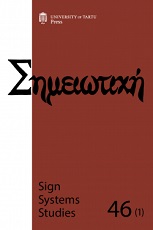Urban ecosemiotics of trees: Why the ecological alien species paradigm has not gained ground in cities?
Urban ecosemiotics of trees: Why the ecological alien species paradigm has not gained ground in cities?
Author(s): Tiit Remm, Riin MagnusSubject(s): Semiotics / Semiology, Semiology, Evaluation research, Rural and urban sociology
Published by: Tartu Ülikooli Kirjastus
Keywords: urban semiotics; ecosemiotics; alien species; poplars; pyramid oaks;
Summary/Abstract: The transportation and translocation of species beyond their natural habitats is considered to be one of the major causes of biodiversity loss these days. Concerns are growing also about urbanization and the resulting destruction of natural habitats. At the same time, the integration of urban environments into nature protection efforts has brought along the intent to apply the ecological alien species paradigm in cities. Yet, as the practices of urban landscaping demonstrate, this objective has not been achieved. In this article, we propose that the reasons behind it are largely related to the specifics of the city as a semiotic system. Multiplicity of codes and subjects of various origins is contested by the ecological alien species paradigm, yet characteristic of the urban semiotic environment. The city often serves the function of a cultural model, embodying the principles of setting the borders between Self and the Other.
Journal: Σημειωτκή - Sign Systems Studies
- Issue Year: 46/2018
- Issue No: 2-3
- Page Range: 319-342
- Page Count: 24
- Language: English

